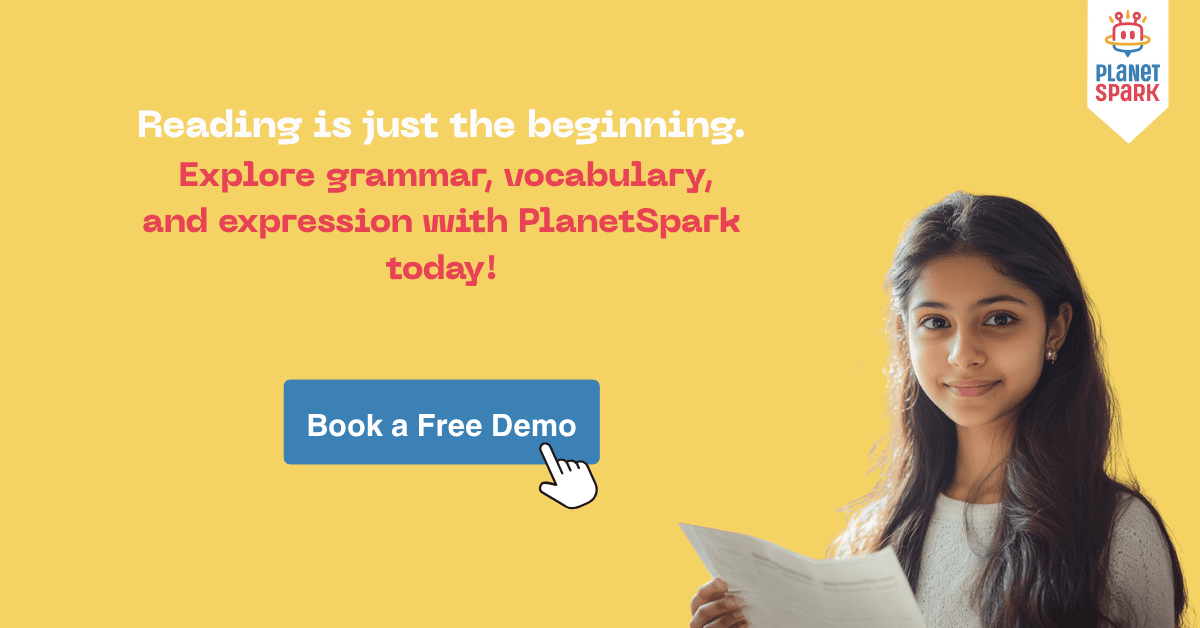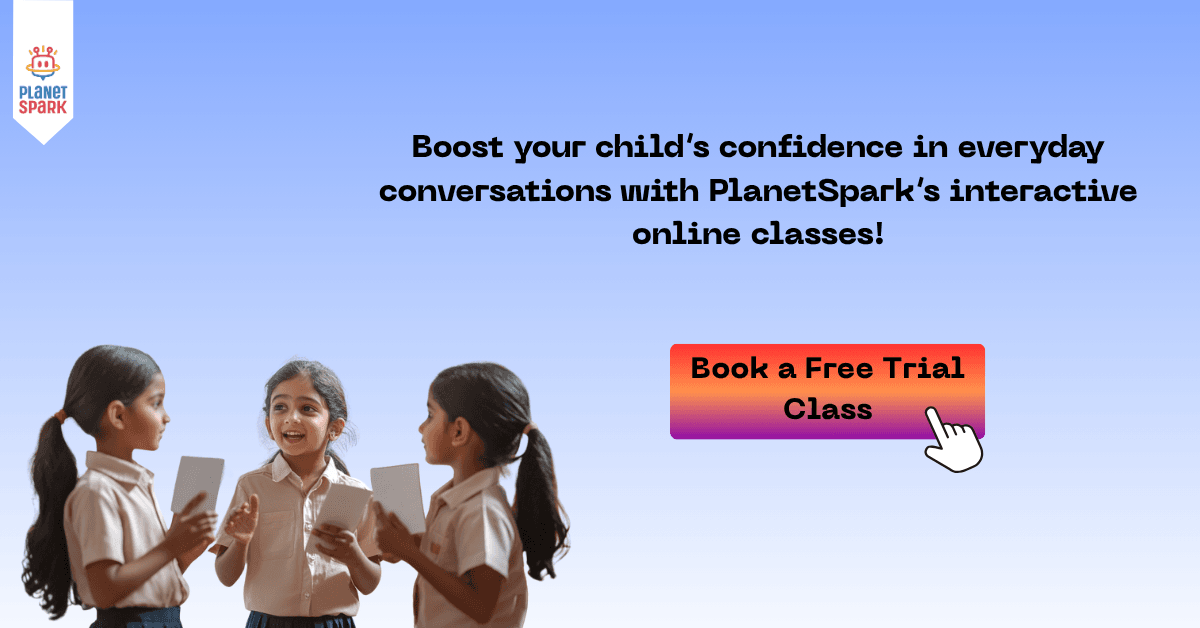Master Advanced Tenses in English Narratives Easily

Table of Contents
- Understanding the Role of Tenses in Narratives
- Using Simple Past for Classic Narratives
- The Power of Past Perfect in Flashbacks
- Present Tense for Immersive Storytelling
- Combining Tenses for Complex Storylines
- Maintaining Tense Consistency
- Using Future Tense in Narratives
- Tense and Narrative Perspective
- Shifting Tenses for Emphasis
- Why Choose PlanetSpark
Mastering tenses in English is more than just learning grammar rules; it’s about understanding how time shapes meaning and emotion in writing. In narrative writing, tenses aren’t just grammatical tools; they are storytelling devices that build atmosphere, convey emotion, and create depth. This blog will help you explore advanced uses of tenses in English, focusing on how they function in narratives. We’ll cover how different tenses influence storytelling, how to maintain consistency in tense usage, and when to use specific tenses for impact.
Understanding the Role of Tenses in Narratives
Every narrative relies on time, and tenses in English serve as the framework for expressing that time. Whether you are describing an ongoing event, a flashback, or a future possibility, the correct tense determines the reader’s sense of chronology and immersion.
In storytelling, tenses do three major things:
- Establish Time: Define when actions occur, past, present, or future.
- Build Perspective: Control how the reader experiences the story (e.g., first-person present vs. third-person past).
- Enhance Emotional Impact: Use tense shifts to reflect mood or change in pace.
For example:
- She walks into the room and feels a chill. → Immediate, present-tense narrative.
- She walked into the room and felt a chill. → Reflective, past-tense narrative.
Understanding these nuances helps writers choose the most effective tense for their narrative tone and intention.

Using Simple Past for Classic Narratives
The simple past tense is the most common tense used in traditional storytelling. It allows readers to follow events naturally, as though they already happened, making it ideal for recounting completed actions.
Examples:
- He opened the door and saw the ocean for the first time.
- They traveled across the mountains before the storm hit.
Writers use the simple past tense because it:
- Creates a clear timeline of events.
- Helps maintain consistency throughout the story.
- Allows for easy incorporation of flashbacks or foreshadowing.
When to Use:
- For stories with a clear sequence of events.
- When narrating in a reflective or distant tone.
It’s essential to maintain tense consistency once you begin in the past tense; avoid unnecessary switches unless intentional for flashbacks or emphasis.
The Power of Past Perfect in Flashbacks
The past perfect tense is crucial for handling time shifts within narratives. It’s used to describe actions that happened before another event in the past. This helps maintain chronological clarity, especially in complex storylines with multiple timelines.
Examples:
- She had already left when I arrived.
- By the time they reached the station, the train had departed.
In storytelling, this tense acts like a “time anchor.” It signals to the reader that the narrative is moving backward to recall a previous event.
Usage Tips:
- Use it at the start of a flashback, then return to simple past once the scene is established.
- Avoid overusing past perfect; it can make writing heavy. Transition smoothly back to the simple past once the context is clear.
Example in a Narrative Context:
Maya had studied every night before the exam week began. Now, sitting in the hall, she felt the weight of those sleepless nights.
Here, the shift from had studied (past perfect) to felt (simple past) smoothly guides readers between time frames without confusion.
Discover how PlanetSpark turns grammar into creative storytelling.
Present Tense for Immersive Storytelling
Modern narratives, especially young adult and contemporary fiction, often use the present tense to create immediacy and emotional intensity. Unlike the past tense, which feels reflective, the present tense places readers directly in the moment.
Example:
- I walk down the dark hallway, trying not to breathe too loudly.
- She opens the envelope and her heart stops for a moment.
This tense makes readers experience the story alongside the characters, offering a sense of suspense and emotional involvement.
Advantages:
- Builds a fast-paced, cinematic feel.
- Enhances emotional connection and realism.
- Works well for first-person or diary-style narratives.
When to Use:
- In first-person narratives for immediacy.
- For action-driven or psychological stories where emotions evolve in real-time.
However, writers must handle the present tense carefully; it requires strong pacing and clear transitions to avoid monotony.
Combining Tenses for Complex Storylines
Advanced narratives often require multiple time layers, memories, parallel events, or foreshadowing. In such cases, combining tenses strategically enhances readability and temporal flow.
For example, a story may begin in the past tense, shift to the past perfect for a flashback, and occasionally move to the present tense for reflective thoughts.
Example:
She walked through the empty corridor, remembering how it had once echoed with laughter. Now, it feels lifeless.
Here, walked (simple past), had echoed (past perfect), and feels (present) are combined purposefully:
- Simple past narrates the main action.
- Past perfect recalls an earlier memory.
- The present tense brings immediacy to her emotional reflection.
Writers should plan these transitions carefully to avoid confusing readers and to maintain logical sequence.
Start a personalized journey toward English mastery.Unlock Your Child’s Grammar Confidence
Maintaining Tense Consistency
One of the most common issues in narrative writing is tense inconsistency, unintentional switching between tenses that disrupts the timeline. Maintaining a consistent tense throughout each section ensures clarity.
Key Guidelines:
- Choose one primary tense (usually past or present) for the main narration.
- Shift tenses only for legitimate time changes, such as flashbacks or foreshadowing.
- When the tense shifts, provide clear contextual signals (e.g., “Earlier that day…”).
Example of Inconsistency:
She opened the door and saw the storm. (Incorrect mixed past and present)
Corrected Version:
She opened the door and saw the storm.
Maintaining tense consistency keeps the reader anchored in the story’s timeline and strengthens narrative flow.
Using Future Tense in Narratives
While rare, the future tense can be used effectively in certain types of narrative, particularly predictive or reflective ones. It conveys anticipation, uncertainty, or foreshadowing within the story.
Examples:
- She will remember this moment for years to come.
- Tomorrow, he will face the truth he’s avoided all his life.
In memoirs or reflective storytelling, the future tense adds a contemplative tone, indicating the narrator’s awareness of what is yet to unfold.
Usage Tips:
- Use the future tense sparingly within past-tense stories.
- Ideal for ending paragraphs, epilogues, or character introspection.
- Maintain clarity by marking transitions with temporal cues (e.g., Someday, she will understand why he left.).

Tense and Narrative Perspective
Tense choice in English narratives is deeply linked to narrative perspective. Whether a story is told in the first person or third person, the chosen tense affects the intimacy and pacing of the story.
First-Person Narratives:
- Often written in the present tense for immediacy and emotion.
- Alternatively, the past tense provides reflection and distance.
Examples:
- Present: I run down the street, heart pounding.
- Past: I ran down the street, heart pounding.
Third-Person Narratives:
- Commonly written in the past tense, giving a broad and objective view.
- Some modern works use the third-person present for a cinematic effect.
Examples:
- Past: He watched the sunset fade behind the hills.
- Present: He watches the sunset fade behind the hills.
Writers should select tense and perspective together, as this combination defines the story’s tone, speed, and emotional depth.
Shifting Tenses for Emphasis
Deliberate tense shifts can highlight important contrasts or turning points in a story. This technique must be intentional and meaningful, not accidental.
Example
The night had been calm. Then suddenly, she hears the whisper again.
Here, the sudden switch from had been (past perfect) to hears (present) signals urgency and immediacy, pulling the reader into the moment.
When to Apply:
- To emphasize a memory or sudden realization.
- To transition between reflection and present awareness.
- To mark emotional or temporal contrast within scenes.
The key is balance; using shifts purposefully enhances storytelling, while careless changes disrupt it.
Experience Learning Beyond Rules.
Mastering tenses in English is essential for anyone looking to elevate their storytelling skills. In narratives, tense choices influence mood, pacing, and reader engagement. Whether it’s using the simple past for traditional storytelling, the past perfect for flashbacks, or the present tense for immediacy, the right tense determines how vividly a story unfolds in the reader’s mind.
Advanced writers learn to control time through tense using combinations to layer memories, reflections, and predictions seamlessly. Consistency ensures clarity, while intentional shifts add emotional power. In short, mastering tenses isn’t just about grammar rules; it’s about narrative precision and stylistic command.
To excel in storytelling, practice identifying tense shifts in your favorite books, experiment with mixed-timeline narratives, and refine your writing through feedback. With deliberate practice, you’ll find that perfect balance between grammatical accuracy and creative flow.
Why Choose PlanetSpark
Where Mastery Meets Expression
At PlanetSpark, we help learners move beyond textbook grammar into real-world applications. Our courses are designed to make students confident communicators who can write, speak, and think in English fluently.
Here’s what makes PlanetSpark stand out:
- Interactive Learning: Students explore grammar through engaging stories, dialogues, and role plays instead of rote memorization.
- Concept-to-Application Model: Lessons follow a clear path, rule ➝ examples ➝ sentence building ➝ paragraph writing ➝ live correction.
- Gamified Tools: Grammar and tense mastery come alive through fun quizzes, puzzles, and interactive games.
- Writing Integration: Every concept is followed by practical writing tasks to ensure real-world understanding.
- Structured Progression: From simple tenses to complex narrative grammar, learners advance through clearly defined levels.
- Detailed Parent Reports: Parents receive insights on writing fluency, grammatical accuracy, and conceptual growth.
PlanetSpark empowers learners to apply tenses in English naturally and confidently, shaping writers who don’t just know grammar but use it effectively to tell powerful stories.
Transform Reading into Storytelling: Learn how tenses shape emotions and narrative depth.
Frequently Asked Questions
Tenses organize time in storytelling, guiding readers through events, emotions, and transitions clearly and coherently.
The simple past tense is most commonly used, as it provides a natural flow and familiarity for readers.
Yes, advanced writers often mix tenses to handle flashbacks, reflections, or future events but consistency and clarity are crucial.
Write short stories or journal entries using different tenses, then review transitions to ensure grammatical consistency.
Past tense narrates main events, while past perfect indicates actions that happened before another past event.
Download Free Worksheets
Personalized Communication Report
Record a video to get a AI generated personalized communication report for your child

Hi There, want to try these
tips for your child with
LIVE with our expert coach?
Let's check your child's
English fluency

